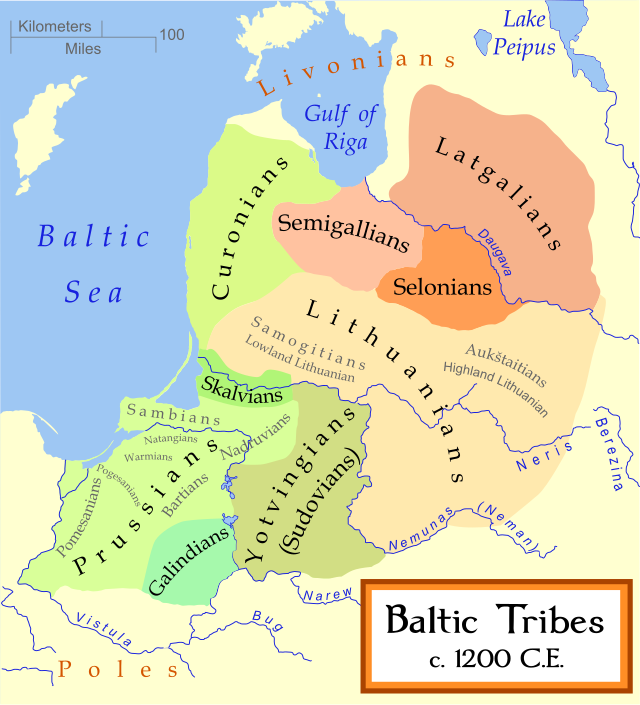Curonian language
Extinct Baltic language of Courland From Wikipedia, the free encyclopedia
The Curonian language (German: Kurisch; Latvian: kuršu valoda; Lithuanian: kuršių kalba), or Old Curonian, was a Baltic language spoken by the Curonians, a Baltic tribe who inhabited Courland (now western Latvia[2]: 291–293 [1] and northwestern Lithuania[3]).

Classification
Curonian was an Indo-European language of the Baltic branch, as proven by Jānis Endzelīns.[4]
Curonian's relation to other Baltic languages is unclear:[1]
- Some scholars consider it to have been an East Baltic language, intermediate between Lithuanian and Latvian.[5]
- Others, like Vytautas Mažiulis, classify it as a West Baltic language that became closer to the Eastern branch due to extensive contact.[6]: 295 [7]
- Linguist Eduard Vääri argues that it is possible that Curonians were Baltic Finns.[8]
History
Old Curonian disappeared in the course of the 16th century.[1]
After the dissolution of the Soviet Union, the Baltic states saw a revival of scientific and cultural interest in extinct Baltic languages and tribes, including Yotvingian, Curonian, and Old Prussian.[citation needed]
Lexicon
Samogitian words such as kuisis (mosquito), pylė (duck), blezdinga (swallow), cyrulis (skylark), zuikis (hare), kūlis (stone), purvs (marsh), and pūrai (winter wheat) are considered to be of Curonian origin.[9]
Further words show similarities with Old Prussian: *kela and Old Prussian: kelan compared to Lithuanian: rãtas, Latvian: rats, all meaning wheel.[2]: 296–297
Corpus
Evidence from other languages
Curonian left substrata in western dialects of the Latvian and Lithuanian, namely the Samogitian dialect. No written documents in this language are known, but some ancient Lithuanian texts from western regions show some Curonian influence. According to Lithuanian linguist Zigmas Zinkevičius, long and intense Curonian–Lithuanian bilingualism existed.
Onomastics
There are only few onomastics in the region considered to have been inhabited by the Curonians.[2]: 297
There are attested names of Curonian noblemen such as: Lammekinus, Veltūnas, Reiginas, Tvertikis, Saveidis.
Potential text in Curonian
Additionally, the Pater Noster reported by Simon Grunau is speculated to be in Curonian.[2]: 297 [10]
Lord's Prayer after Simon Grunau
Nossen thewes, cur tu es delbes
sweytz gischer tho wes wardes
penag munis tholbe mystlastilbi
tolpes prahes girkade delbeszisne tade symmes semmes worsunii
dodi mommys an nosse igdemas mayse
unde gaytkas pames mumys nusze noszeginu cademes pametam musen prettane kans
newede munis lawnā padomā swalbadi munis nowusse loyne Jhesus amen.
See also
References
Literature
External links
Wikiwand - on
Seamless Wikipedia browsing. On steroids.

